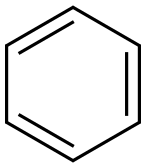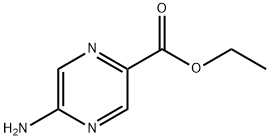On April 26, a massive explosion occurred at the Shahid Rajaee Port in Bandar Abbas, southern Iran. This port, one of Iran's major shipping bases and a crucial maritime gateway, plays a pivotal role in the country's trade. According to data from the Iranian official IRNA, over 55% of Iran's non - oil cargo imports and exports are handled at this port, and it also undertakes more than 85% of Iran's container handling tasks. As of April 27, the death toll from the explosion has reached 25, with the injured number still rising. So, what on earth led to this tragic incident? Was it a deliberate act by external forces like Israel, or an accident caused by chemical reactions?
Was Israel responsible for Iran's largest port explosion? Was there a chemical explosion?
Related Encyclopedia
Related Products More >
-
- 7778-54-3
- CNY equest For Quotation
-
- 71-43-2
- CNY 6000.0000
- 1ton
-
- 108-88-3
- CNY 5600.0000
- 1ton
-
- 108-90-7
- CNY 5000.0000
- 1ton
-
- 95-47-6
- CNY 1000.0000
- 1ton
-
- 7778-54-3
- CNY 0.8000
- 25kg
-
- 7778-54-3
- USD 50.0000
- 45kg
-
- 6484-52-2
- equest For Quotation
- 25kg








 沪ICP备2021018848号-5
沪ICP备2021018848号-5

The fire that ensued after the explosion was intense and widespread, as can be seen from the on - site videos which showed thick smoke billowing and vehicles near the port suffering varying degrees of damage.
Iran's Crisis Management Organization announced on the 27th local time that 80% of the firefighting work at the port has been completed, and it is expected that the fire will be completely extinguished in the next few hours. According to the order of the Iranian president, all government and rescue agencies must fully coordinate until the last moment and use all necessary resources to completely extinguish the fire and reduce the losses caused by this accident.
Iran's government spokesman, Mojtahid, stated that it is currently certain that the explosion occurred in containers "stored at the port and possibly containing chemicals." Before the fire is completely extinguished, it is very difficult and will take time to make an accurate and professional statement about the cause of the accident. Military commentator Wang Qiang pointed out that considering the current security situation faced by Iran, the causes of this incident may be complex. On one hand, deliberate sabotage by hostile forces cannot be ruled out. The port was cyber - attacked in 2020, causing serious congestion. On the other hand, if there are accidents such as improper storage of hazardous chemicals in the port's container terminals, it can also lead to such serious incidents.
Some people suspect Israel of being behind the explosion, given the long - standing tensions between the two countries. Israel has always been concerned about Iran's regional influence and its nuclear program. However, as of now, there is no concrete evidence to support this claim. If it was indeed an act of sabotage by external forces, the use of hidden explosives in the container area might be a possible means. But the fact that the explosion occurred during the day and there were no signs of air strikes makes a missile attack less likely.
Others believe that problems such as aging facilities and mismanagement within the port could be the root cause. Iran has long been under sanctions, which has led to insufficient maintenance of infrastructure. Just last year, an energy crisis broke out, and aging oil tanks and port equipment may have increased the risk of accidents. If the explosion was due to mistakes in handling dangerous goods or equipment failures, it is necessary to carefully examine the daily management loopholes in the port.
The explosion in Bandar Abbas has drawn international attention. As the investigation continues, the world is waiting for a clear answer: was it a malicious act by external forces, an accident within the port, or something else?
Chemical experts analyzing the smoke composition identified volatile organic compounds (VOCs) including benzene (C₆H₆), toluene (C₇H₈), and xylene (C₈H₁₀) in the plume, suggesting potential combustion of petrochemical materials stored at the port's container terminals. The presence of chlorinated hydrocarbons was also detected, raising alarms about possible toxic runoff into surrounding waters. Preliminary investigations indicate the fire originated near a warehouse containing industrial adhesives and polymethyl methacrylate (PMMA) stockpiles, materials known for their high combustibility and toxic byproducts when ignited under pressure.
Forensic teams have collected debris samples containing traces of ammonium nitrate (NH₄NO₃) and calcium hypochlorite (Ca(ClO)₂), chemicals typically used in industrial blasting caps and water purification systems respectively. While authorities maintain the explosion resulted from accidental combustion rather than sabotage, the unusual combination of these substances warrants further scrutiny. Satellite imagery revealed structural damage patterns consistent with both detonation waves and prolonged combustion, complicating the determination of whether the incident involved deliberate explosives or cascading chemical reactions.
Despite Israel's customary silence on such matters, regional analysts point to recent cyberattacks targeting Iranian infrastructure as potential precursors to kinetic operations. The port's strategic location near the Strait of Hormuz—through which 20% of global oil passes—amplifies concerns about deliberate disruption attempts. However, forensic chemists argue that the explosion's energy signature more closely aligns with runaway chemical reactions than conventional munitions, noting the absence of characteristic shrapnel patterns in wreckage analysis.
As rescue operations concluded with 21 victims identified and four bodies pending forensic examination, critical questions remain unanswered. Did the explosion result from cascading failures in chemical storage protocols, or does it represent a new frontier in hybrid warfare combining cyber manipulation with physical sabotage? With Iranian authorities pledging thorough investigations while simultaneously intensifying military drills near the Strait of Hormuz, the international community watches anxiously for answers that could reshape regional security dynamics.
Eyewitness accounts and footage showed the severity of the blast's impact. Victims described the chaos that followed, with some diving under tables or being thrown by the shockwave. Rescue teams quickly mobilized, using trucks to transport soil around the explosion zone in an effort to contain the fire and prevent it from spreading. Iranian Interior Minister Vahidi ordered the immediate removal of nearby shipping containers to create a buffer zone around the fire.
Given the strategic importance of Shahid Rajaee Port, speculation quickly arose about whether this explosion was merely an accident or something more sinister. Some observers have pointed to Israel, which has been accused in the past of carrying out covert operations targeting Iranian infrastructure. However, no official evidence has yet confirmed any external involvement.
There is also the question of whether a chemical explosion played a role. Ports often store large quantities of hazardous materials, and early images from the scene suggest that a chemical reaction could have triggered or amplified the blast. Substances like ammonium nitrate, hydrogen peroxide, or sodium chlorate are commonly found in port storage facilities and are known to be highly explosive under certain conditions. If these chemicals were improperly stored, they could easily cause a chain reaction leading to such a catastrophic event.
Iranian authorities have been cautious in their public statements, focusing primarily on firefighting efforts and humanitarian response rather than speculating on the cause. Still, the urgency with which the government ordered full coordination of all government and rescue agencies, along with the emphasis on deploying every available resource, indicates the seriousness of the situation.
As investigations continue, key questions remain: Was the Shahid Rajaee Port explosion simply an industrial accident worsened by the storage of dangerous chemicals? Or was it the result of a deliberate act of sabotage by a foreign entity like Israel? Until a full investigation is completed and more concrete evidence comes to light, the true cause behind one of Iran’s largest port disasters will remain shrouded in uncertainty.